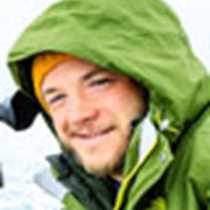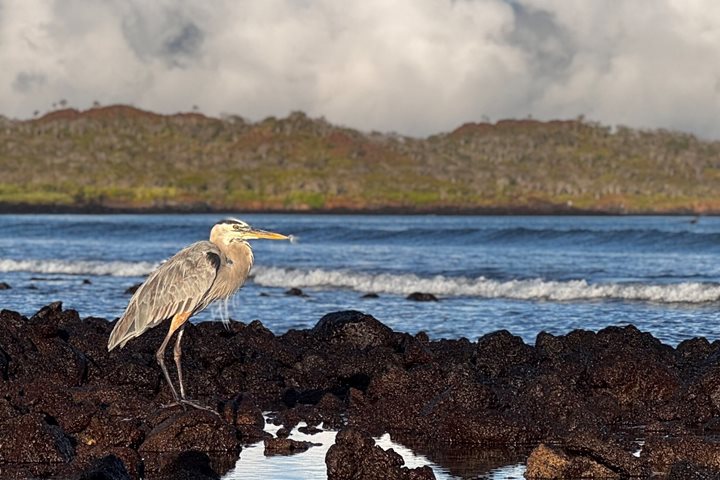Santiago Island is the fourth largest island in the Galapagos archipelago and an optimal sea turtle nesting areas, apparent from the turtle tracks left in the sand from last night. During our dawn landing this morning, the guests were treated to a few pairs of mating sea turtles, bobbing next to our Zodiacs. Upon landing on the golden sand of Espumilla Beach, we were greeted by a couple of Galapagos hawks, the top predator on these unique islands. This high concentration of this iconic raptor is due to the abundant food source of hatchling turtles and an ideal nesting area on Santiago Island. These incredible close wildlife encounters all occurred before our 08:00 breakfast, the beginning of another incredible day in this magical place. Back aboard National Geographic Endeavour II, the guests had breakfast to recharge energies for our next adventure of snorkeling and kayaking around the historic and scenic Buccaneer Cove, well known for a pirate hangout and a place that Charles Darwin spent most of his five weeks exploring these islands.
Kayaking was spectacular, the scenery of the place is amazing with many tuff cones, parasitic volcanoes, and the geology is very impressive. The snorkeling was superb, we found a big school of
Our evening adventure was spent onshore at a wildlife hotspot called Puerto Egas. The backdrop to this panoramic landscape were beautiful red volcanic ciders that flowed to the ocean and the rocky coastline was occupied by many endemic species like the Galapagos fur seals, Galapagos sea lions, and marine iguanas. Our adventurous day was capped off by a spectacular sunset as we made our way back to the beach trail to the Zodiac landing. Santiago Island is one of the true gems of the Galapagos archipelago and one of the highlights of this exciting journey after Christmas.









